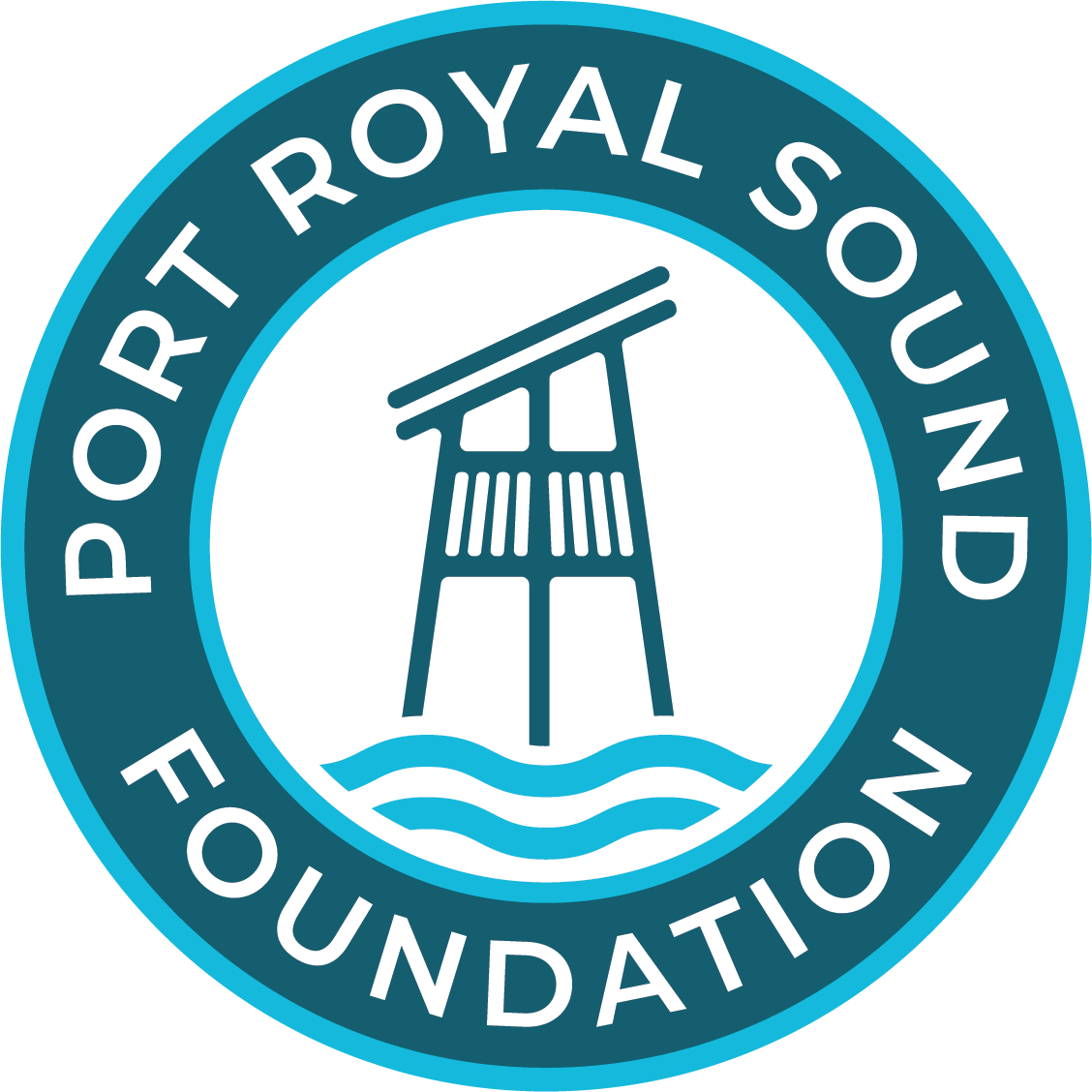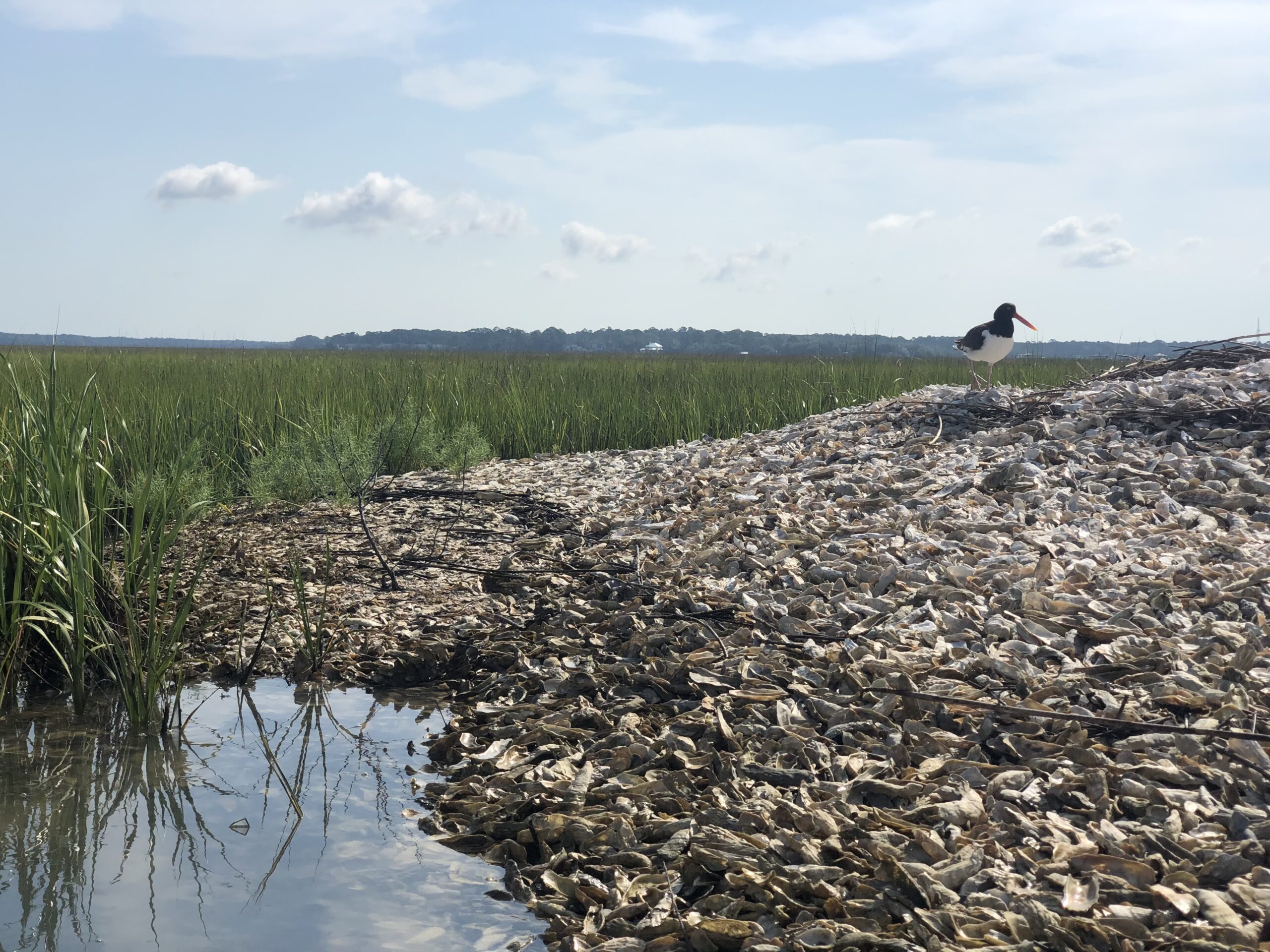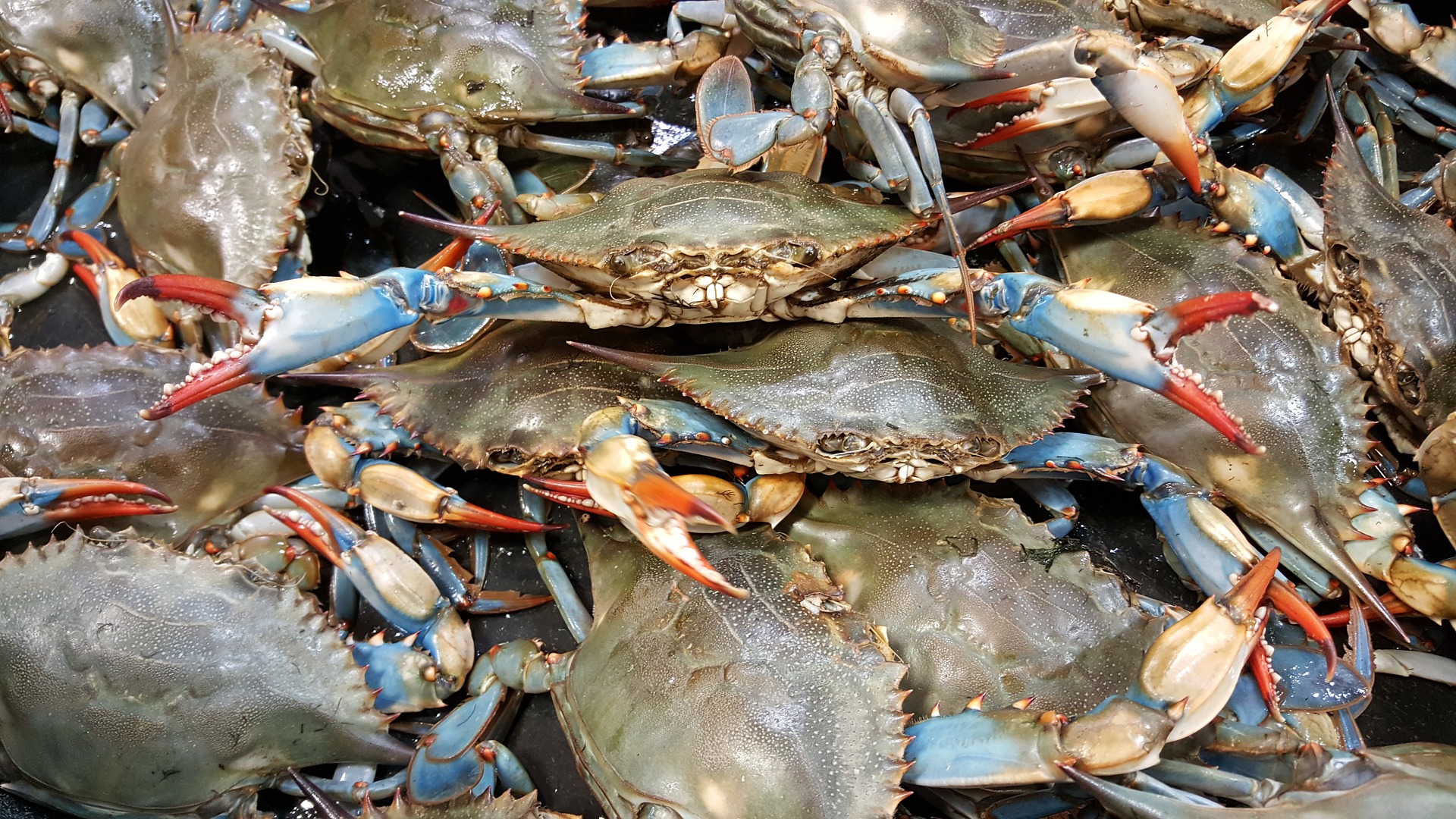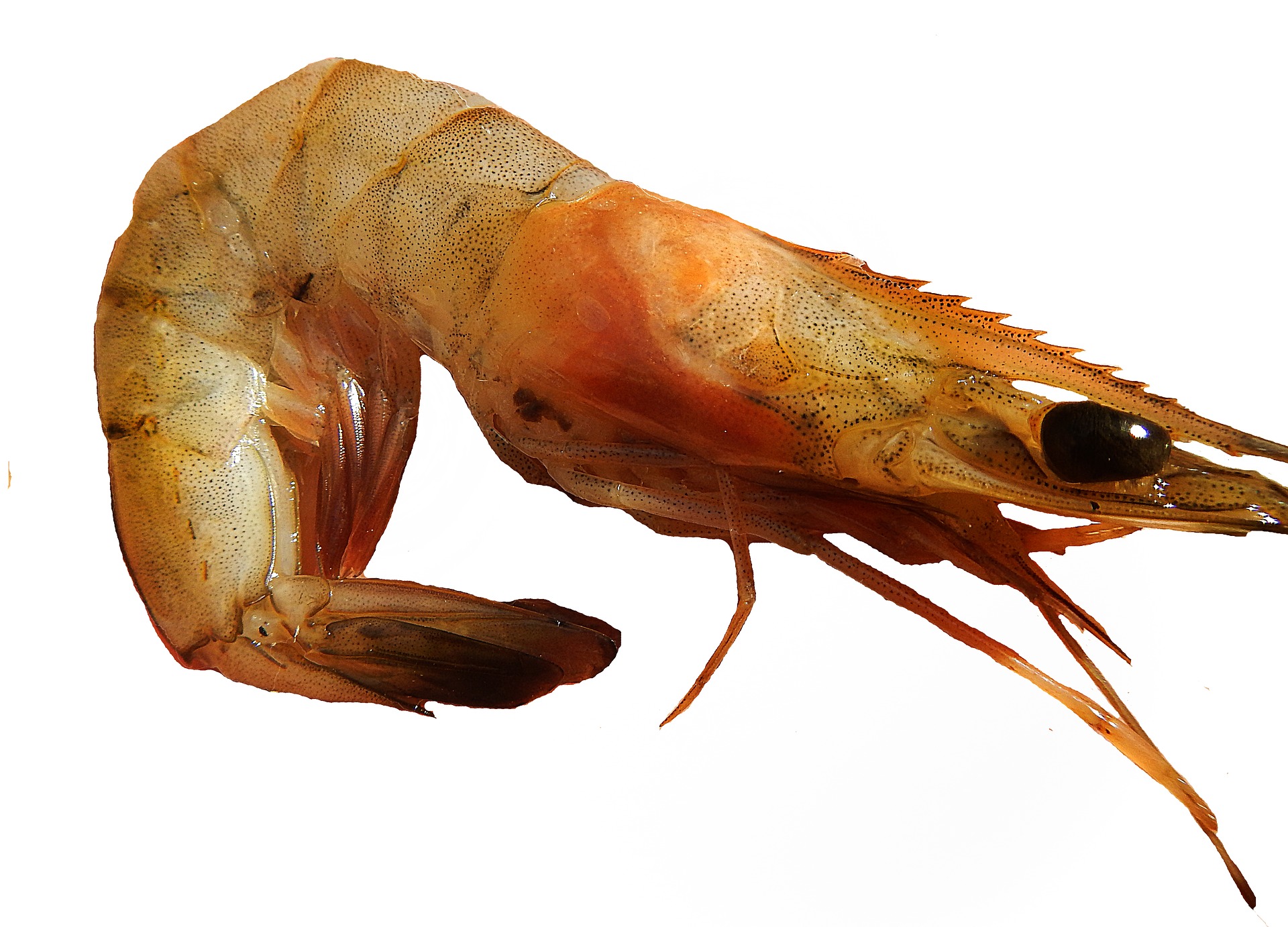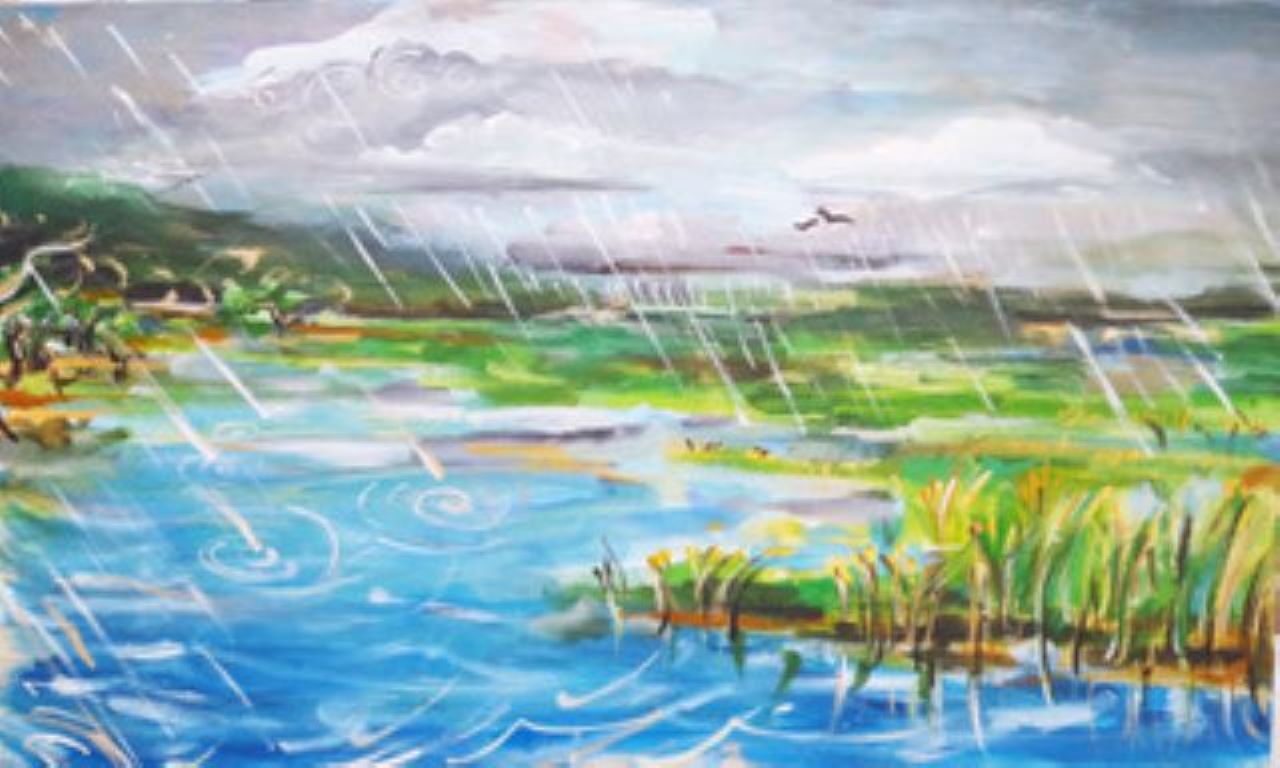Eastern Oysters
Crassostrea virginica
- Identification Information: Shell narrow at the hinge and widening to a rough oval shape. Gray exterior with glossy white interior. Average shell size is 2-6 inches in length. Bivalve mollusk.
- Lifespan: Up to 20 years
- Diet: Oysters are filter feeders. They feed on plankton by opening their shells and pumping water through their gills. This action traps particles for food.
- Fun Fact: One single oyster can filter 2 gallons of water an hour and up to 50 gallons of water a day. A single oyster bed, having as much as 60 kgs of oysters, could filter 3 million gallons of water in one day. They are habitat for fish, crabs, and other animals.
Blue Crab
Callinectes sapidus
- Identification Information: Carapace (shell) varies in color from bluish to olive green and can reach up to 9 inches across. The carapace has 9 marginal teeth on each side. They have 3 pairs of walking legs and paddle-shaped rear swimming legs.
- Lifespan: Up to 3 years
- Diet: Feed on anything they can find, including clams, oysters, mussels, crustaceans, freshly dead fish, and plant/animal detritus.
- Fun Fact: You can tell the difference between male and female blue crabs by flipping them over. Males will have a strongly tapered abdomen, or apron, that resembles an inverted “T” or rocket ship. Females have a broad, rounded apron that is more triangular. Females also tend to have red claw tips.
Fiddler Crabs
Uca spp.
- Identification Information: Three species of fiddler crabs are found in our area, Mud, Sand, and Red-Jointed. They vary in color from tan to brown. Males have one enlarged claw that can grow 1.5-2 inches long while females’ claws are equal in size.
- Lifespan: Up to 2 years
- Diet: Feed on algae, bacteria, and decaying marsh plants.
- Fun Fact: The males’ enlarged claw is not for fighting predators, but to attract a mate and discourage rivals. If the males lose this larger claw, the remaining claw grows to the same size as the lost claw and the new claw will grow to become the smaller claw.
Shrimp
Penaeus spp.
- Identification Information: There are many species of shrimp but 3 that are commercially harvested include the brown, white, and pink shrimp. All 3 look very similar but the white shrimp has a lighter color than the brown or pink shrimp. The tail flippers on the white shrimp are black near the base with bright yellow and green along the edges. Brown shrimp tails are red, dark green, and occasionally light blue in color. Pink shrimp have a light purplish-blue tail, and usually a dark red spot on the side of the abdomen. White shrimp have long antennae and a long rostrum (horn) 4-8 inches in length.
- Lifespan: Usually less than 2 years.
- Diet: Feed on the bottom on detritus, plants, microorganisms, macroinvertebrates, and small fish.
- Fun Fact: In 2020, commercial fisheries brought in a total of 110 million pounds of shrimp, valued at $254 million.
All information presented on this page was sourced from the South Carolina Department of Natural Resources, as well as the Chesapeake Bay Program. Please click the buttons to the left for more details.
Special Shoutout to Jessica Kochman from the Port Royal Sound Foundation for her help on this page! Be sure to check out their website to learn more about their awesome events and activities!
